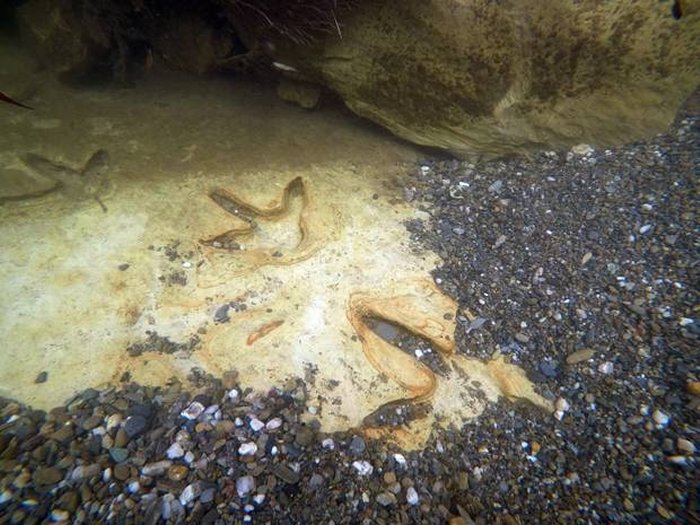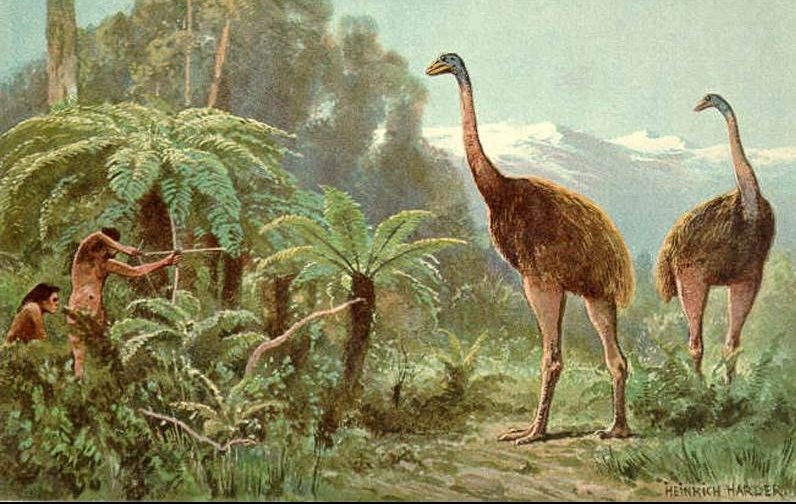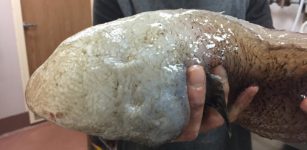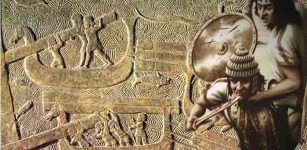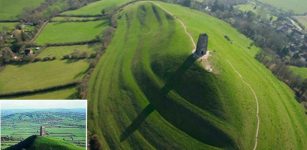12-Million-Year-Old Moa Footprints Discovered Underwater In New Zealand
Eddie Gonzales Jr. – MessageToEagle.com – While walking with his dog, Michael Johnston made an extraordinary discovery that is of international significance.
At the bottom of a river in Maniototo, New Zealand Johnston spotted seven fossilized Moa footprints millions of years old.
When people first arrived in New Zealand, they encountered giant wingless birds known as Moas. Unfortunately, about 600 years ago, these magnificent birds went extinct. However, millions of years ago, New Zealand had a very unique ecosystem and the country was home to a number of animal species that had never been found elsewhere.
The moa footprints on the river bed. Credit: Kane Fleury
After noticing these unusual markings in the clay, Johnston contacted the local Otago museum. As Quartz reports, “days later, museum experts used snorkels and underwater cameras to find seven moa footprints preserved in the river’s hard clay, beneath about three feet (one metre) of water. They are the first tracks from the bird ever found on the island, and believed to be as much as 12 million years old.
See also:
Last Surviving Flightless Bird Species Rose From The Dead
Monster Bird ‘Kumimanu’ Was A Giant Penguin That Reached Human Height
Vorombe Titan: World’s Largest Bird Was A Giant Elephant Bird
Meet Quetzalcoatlus – World’s Largest Flying Animal Had A Wingspan Of Up To 52 Feet (15.9 m)
Recent wet weather in the area seems to have eroded the bank, exposing the clay slab below, with its seven footprints. Each is roughly a square foot (30 cm) in size. Museum experts are now extracting the footprints from the clay, with a view to eventually making them available for researchers to study.”
So my job today was to document the #moafootprints dig. As @OtagoMuseum Director @KaneFleury tells me I’m not trusted with a spade but rumour has it I can point a camera. Here’s another timelapse I shot #newzealand #moa pic.twitter.com/l3smAVFH7I
— Ian Griffin (@iangriffin) May 10, 2019
According to Professor Ewan Fordyce of the University of Otago’s department of geology, “the footprints are the first moa prints to be found in the South Island and a “glimpse into the past before the ice age”.
NzHerald reports that “Otago Museum Director Dr Ian Griffin says his team are still in the process of trying to figure out how best to preserve the footprints.
Moa birds. Credit: Heinrich Harder (1858-1935)
“There will be a lengthy process to safely dry them and ensure that both the footprints and the clay substrate remains stable.
“A project such as this demonstrates the importance of regional museums having skilled scientists on staff and being able to cultivate the relationships with world-class researchers so we can respond to this incredible find so quickly, and effectively.
“I will be pushing the team to get them on display as soon as we can. However, we won’t do that until we are sure they are in a stable condition.”
Written by Eddie Gonzales Jr. – MessageToEagle.com Staff Writer

